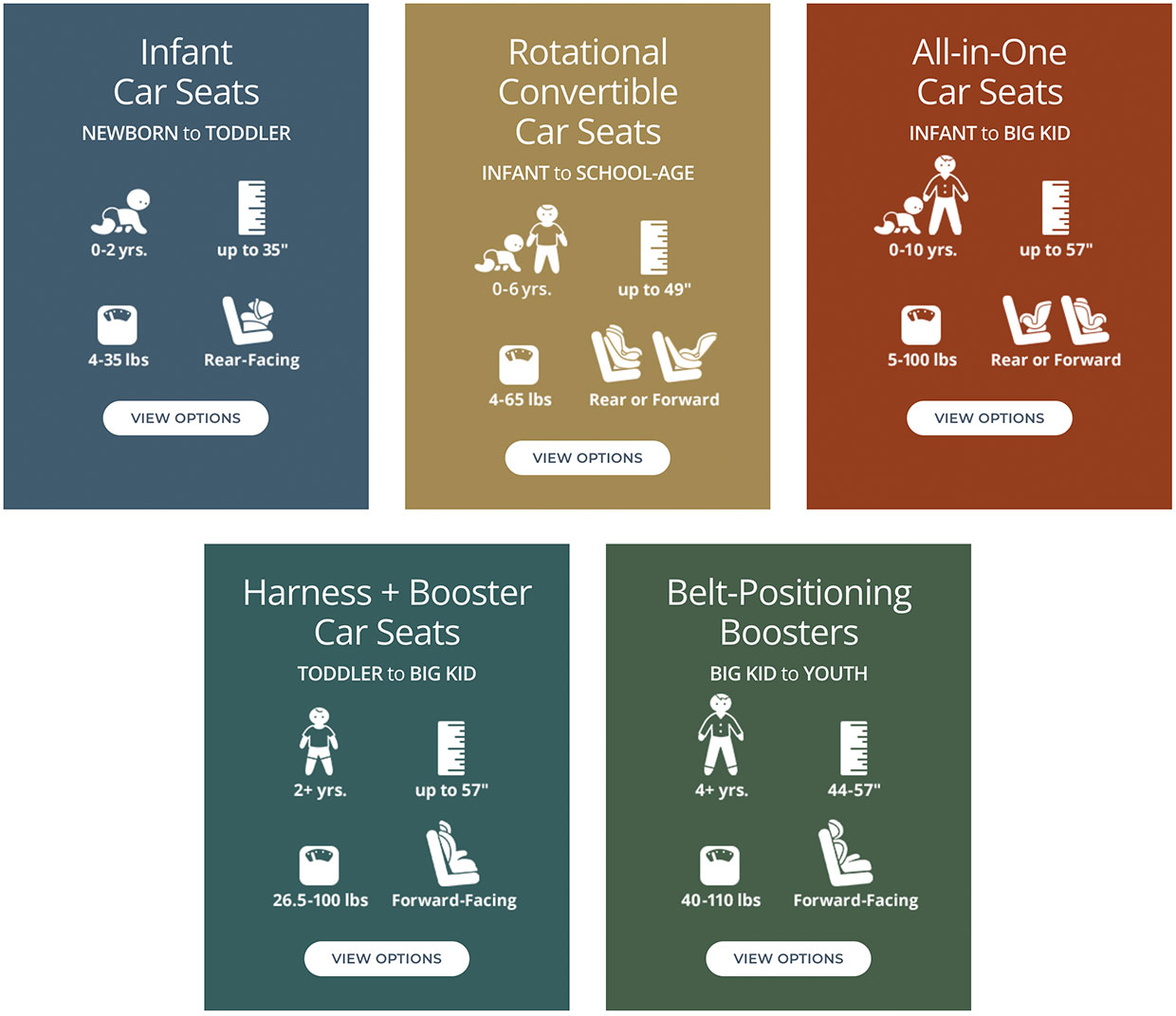You may not realize it until the moment comes, but a car seat is one of the most important purchases you’ll ever make. It’s not until you’re about to put your little one in the car for the first time that you appreciate how critical it is to have a car seat you trust.
There are several different types of car seats, and the right one for your child depends on a few factors, such as your child's age and weight, as well as your vehicle type, to name a few. Below we’ll go over the different types of car seats available and which may be appropriate for your child’s age and weight.
While age shouldn’t be the only factor when deciding which car seat is right for your child, this graphic may simplify or help you narrow down your decision. Again, refer to the seat’s instruction manual to understand the specific requirements and limits of each seat.
1. Infant Car Seat
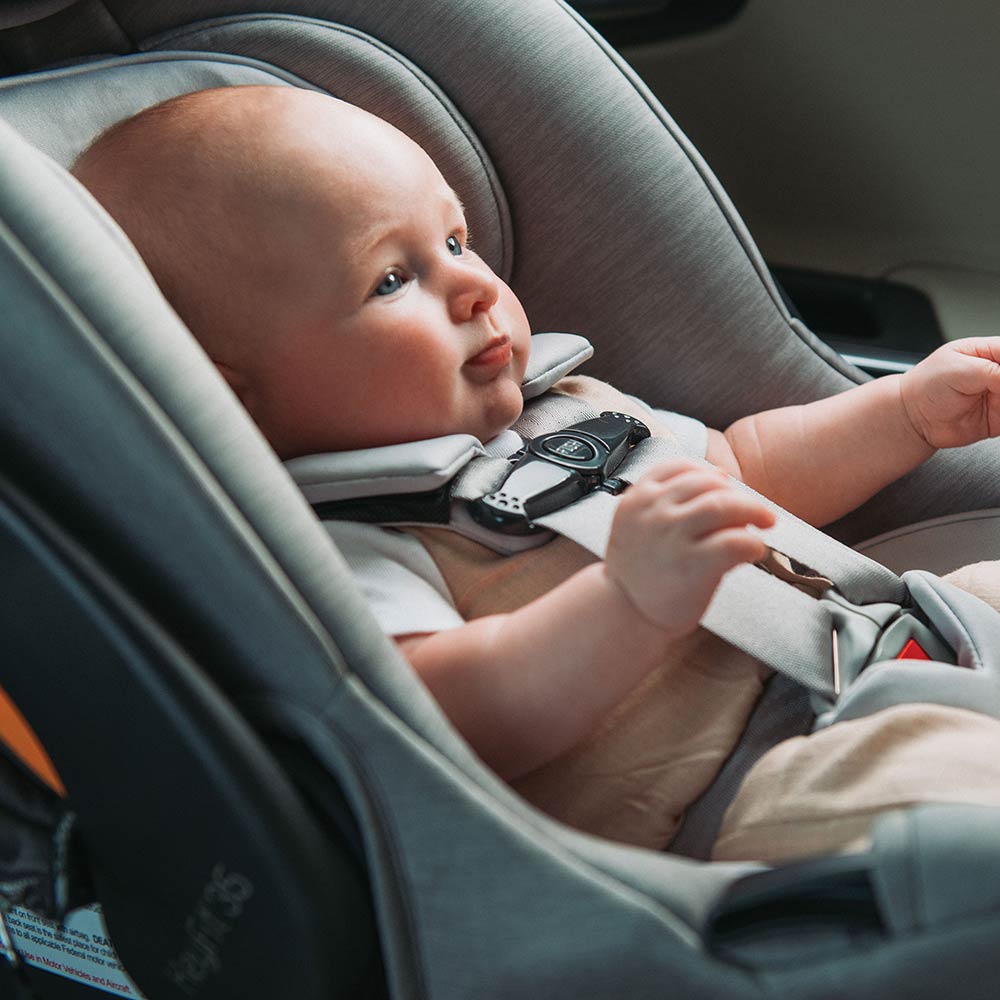
Infant car seats are meant to cradle your baby. They’re designed as a portable car seat for newborns and infants that can only be used rear-facing. Infant seats have a carry handle because they’re highly portable. They can be clicked into and out of a stay-in-vehicle base, and many infant seats also can be secured into a stroller. This means the infant does not have to be removed from the seat because the seat itself is portable.
Infant car seats offer excellent family mobility; however, they do not provide the longest usage. Most children will outgrow their infant car seat in height before they reach the weight limit of the seat. Always make sure your child's head is at least one inch from the top of the highest headrest position. Once you have maximized your infant car seat height and weight limits, it's time to move to a convertible or all-in-one car seat.
Key Features
- Rear-facing design.
- 5-point harness system for added security.
- Detaches from a stay-in-car base for easy transfer between car and stroller.
Age, Weight, or Height Limits
- Designed for infants 4-35 lbs. and up to 30-35 inches tall, depending on the model.
Pros
- Convenient carry handle for portability.
- Seamlessly clicks into a stroller.
- Flexibility to share one car seat between multiple vehicles with an extra base.
Cons
- Shorter lifespan than convertible car seats.
- Rear-facing mode only.
2. Convertible Car Seat
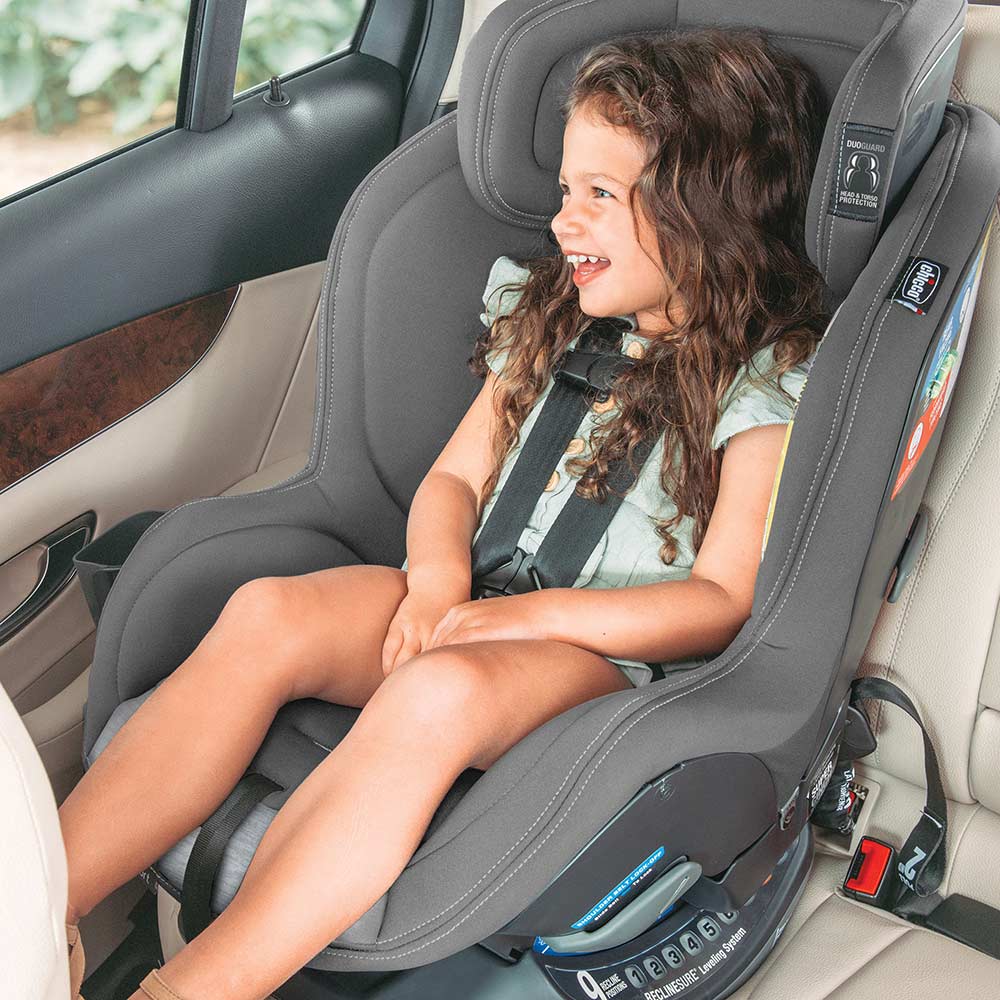
This type of seat is called convertible because it can be used as a rear-facing seat and then converted to forward-facing as your baby reaches the appropriate weight and height. A convertible car seat is bulkier than an infant car seat, and it stays in the vehicle, meaning it can’t click into a stroller like the infant seat. But many parents like convertible car seats because they can be used from birth, through toddlerhood, and into preschool years, so your investment lasts longer. Use this type of car seat until your child outgrows it per the guidelines.
Key Features
- Rear-facing and forward-facing modes for extended use.
- Multiple recline positions for comfort.
- Stays in the car.
Weight or Height Limits
- Rear-facing can be used from birth to 40-50 lbs and up to 43 inches tall (varies by model).
- Forward-facing up to 65 lbs and 49 inches, depending on the seat.
Pros
- Long lifespan.
- Accommodates children as they grow with both rear-facing and forward-facing configurations.
- Provides extended rear-facing usage, which is safest for young children.
Cons
- Doesn’t click into a stroller.
- It is not portable (there is no detachable base, so you may need to buy more than one car seat).
- Can be bulkier in small cars.
3. Rotating Convertible Car Seats
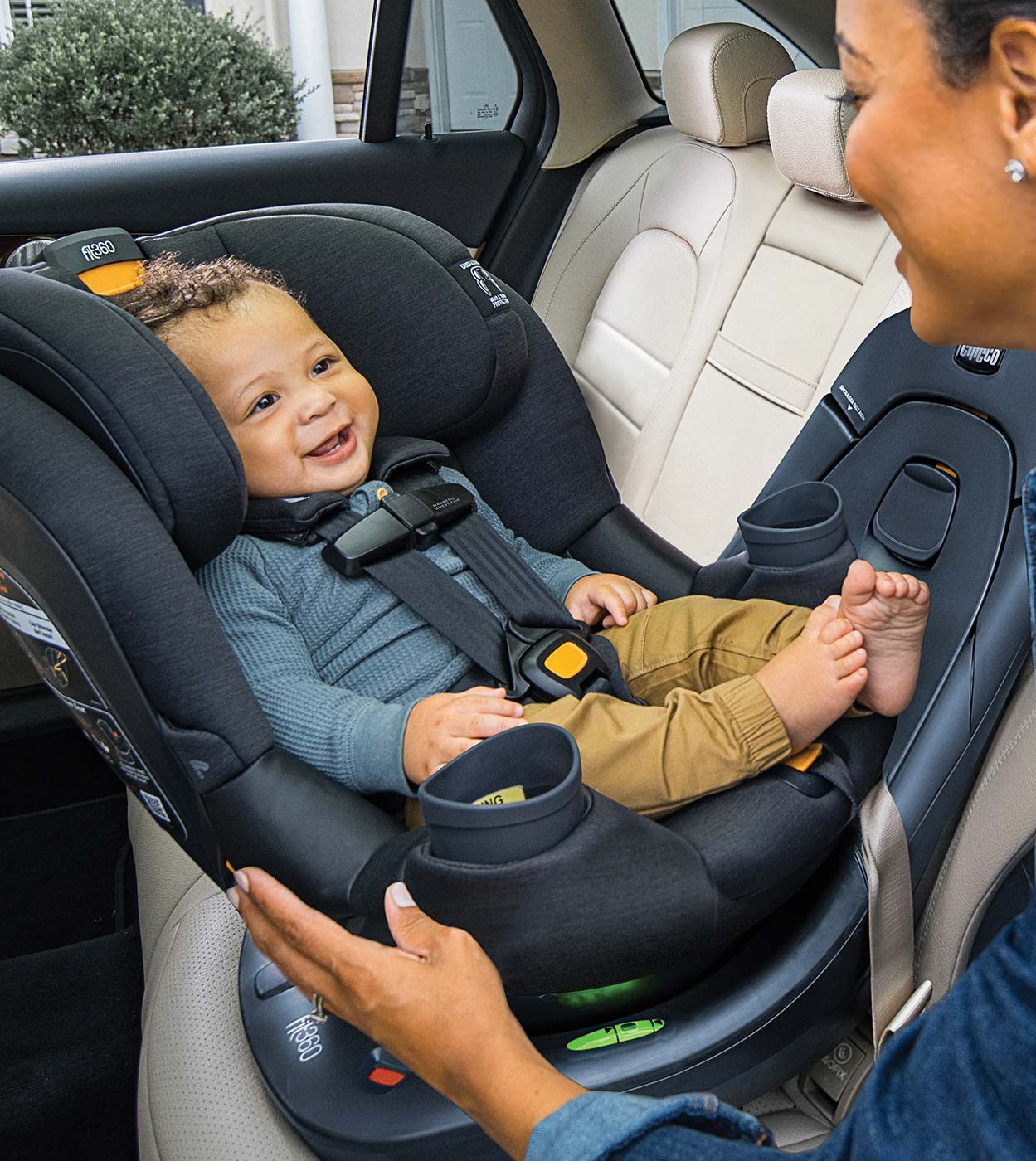
Rotating car seats represent a significant advancement in car seat design, combining convenience and safety to enhance family outings. These seats can rotate 180 or 360 degrees, allowing parents to turn the seat toward the car door when securing or removing their child. This feature is one of the main advantages of rotating car seats and makes it easier to buckle up your little one without straining your back or twisting in awkward positions.
Rotating car seats offer versatile usage, with some models functioning in both rear-facing and forward-facing modes, while others are limited to rear-facing rotation. This flexibility supports your child’s growth, providing comfort and ease of use from infancy through the early years.
Key Features
- The rotating mechanism makes it easier for parents to place and secure their child in the seat from a more comfortable position.
- Rear-facing and forward-facing configurations accommodate growing children from infancy through toddler years.
Age, Weight, or Height Limits
- Rear-facing can be used from birth to 40 lbs and up to 43 inches tall (varies by model).
- Forward-facing from 26.5 lbs-65 lbs and 49 inches tall, depending on the seat.
Pros
- Reduces the physical strain when securing your little one and makes daily travel more manageable.
- Helps parents ensure the child is properly secured.
- Accommodates children as they grow with both rear-facing and forward-facing configurations.
- Some have innovative features that allow the seat to separate from the base for easy installation and the flexibility of purchasing an additional base.
Cons
- Rotating car seats are not compatible with strollers.
- May not be able to use the rotating feature with 3 car seats installed in the vehicle.
- May be more expensive than traditional convertible car seats.
4. All-in-One Car Seat
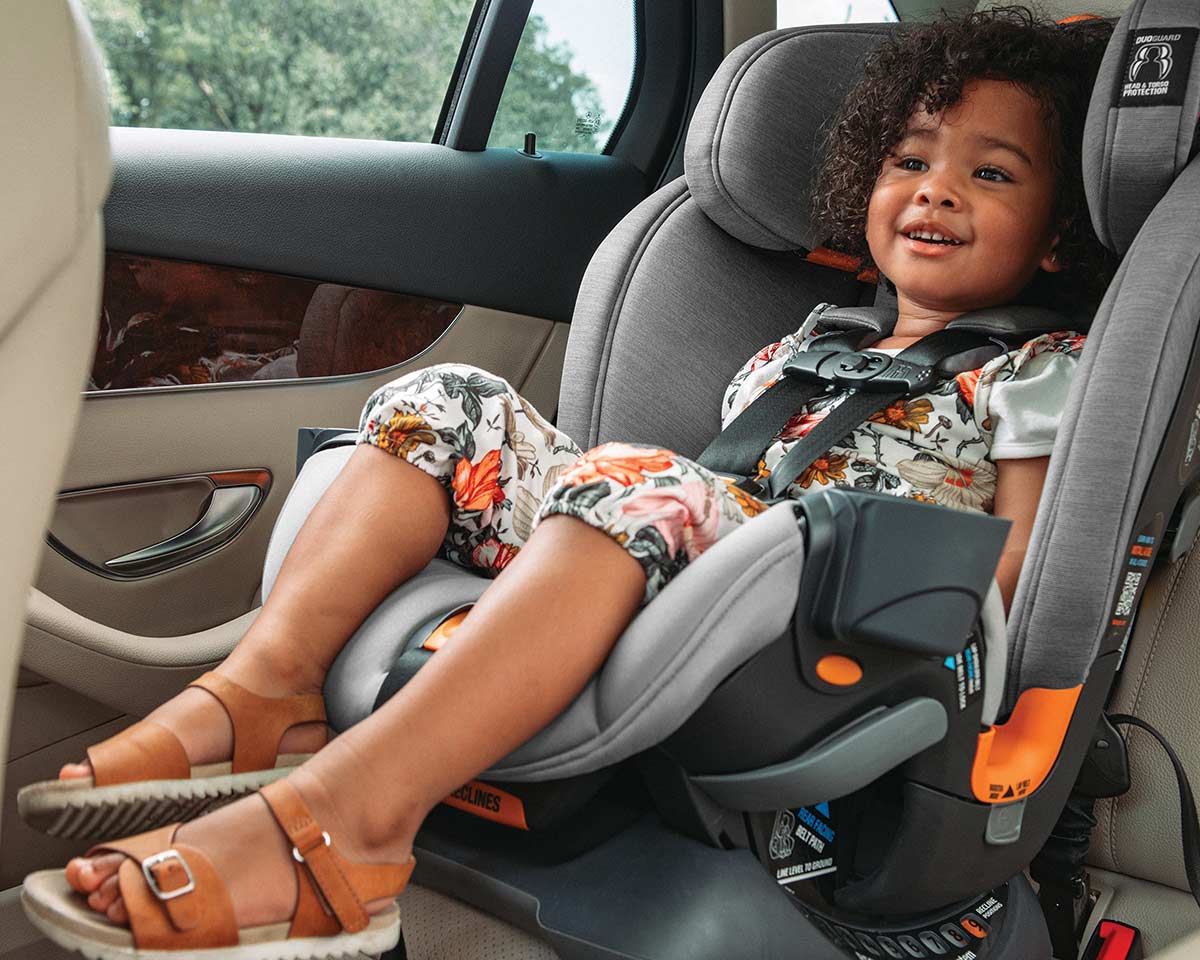
An All-in-One Car Seat has several advantages, such as versatility and a long duration of use. This seat can change from a rear-facing seat to a forward-facing seat (with a harness and tether) and to a booster seat as a child grows. Another advantage to the all-in-one option is that the car seat can be adjusted to accommodate the growth of your child from the infant stage to the booster stage. All-in-one car seats are designed to provide value and versatility for families who seek a one-and-done seat, as well as limit the carbon footprint. This is also a good choice for grandparents who may not transport the child all of the time, but want a seat when the grandkids come to visit.
What are the perceived disadvantages of the all-in-one car seat? Many parents (and their kids) like the idea of starting with a new car seat as the child “graduates” from one to the next. Moving up to a new car seat is seen as a milestone to celebrate. With the all-in-one, the child rides in the same seat all the way until they’re out of a car seat. Keeping the same car seat clean through many years of constant use can also be a challenge.
Key Features
- Rear-facing, forward-facing, and booster modes in a single seat.
- Extended use throughout childhood.
- Versatility and multiple stages.
Age, Weight, or Height Limits
- From birth up to 100 lbs and 57 in. tall or more, depending on the model and car seat mode. The OneFit™ accommodates children in Rear-Facing Harness mode between 5-40 lbs. and up to 43 inches tall, Forward-Facing Harness mode between 25-65 lbs. and up to 54 inches tall, and Booster mode 40-100 lbs. and up to 57" inches.
- Can last from infancy through the booster seat age.
Pros
- Long lifespan.
- Cost-effective.
- Extended rear-facing usage.
Cons
- Can be bulky or heavy.
- Might not fit all cars.
- Difficult to keep clean over time.
- Not portable (no detachable base).
- Not compatible with strollers.
5. Harness Booster Combination Seat
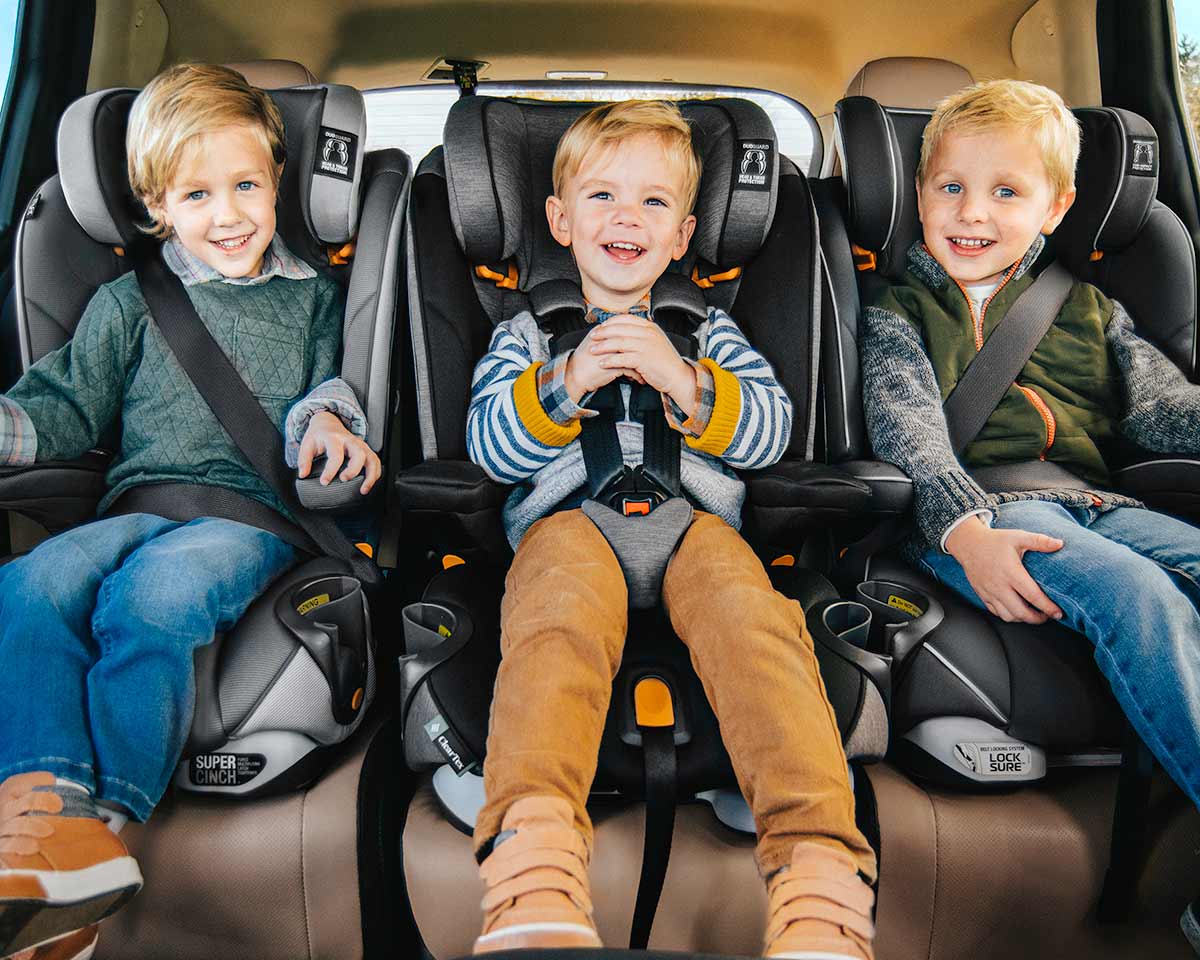
A harness booster is used as a forward-facing seat with a built-in five point harness, and then transitions into a Booster Seat. A combination seat (or harness plus booster car seat) is a forward-facing-only car seat that provides a more mature seat design for riding in the five-point harness and transitions into a belt-positioning booster. Since these seats are forward-facing only, children must meet the age, height, and weight requirements outlined by the car seat manufacturer before using a harness booster car seat.
Key Features
- Designed for older children to transition from a 5-point harness to a vehicle seat belt.
Age, Weight, or Height Limits
- Harness mode can be used by children who are at least 2 years old, between 25-65 lbs, and up to 54 inches tall.
- Booster mode can be used by children who are at least 4 years old, between 40-100 lbs, and between 38-57 inches tall.
Pros
- Serves as a helpful transition from internal harness to vehicle seat belt restraint.
- Grows with the child.
- Typically slimmer than convertible and all-in-one car seats.
Cons
- Forward-facing mode only.
- The backrest may not be removable, so the option to go to a backless booster mode is not always available with this seat.
6. High-Back and Backless Booster Seats
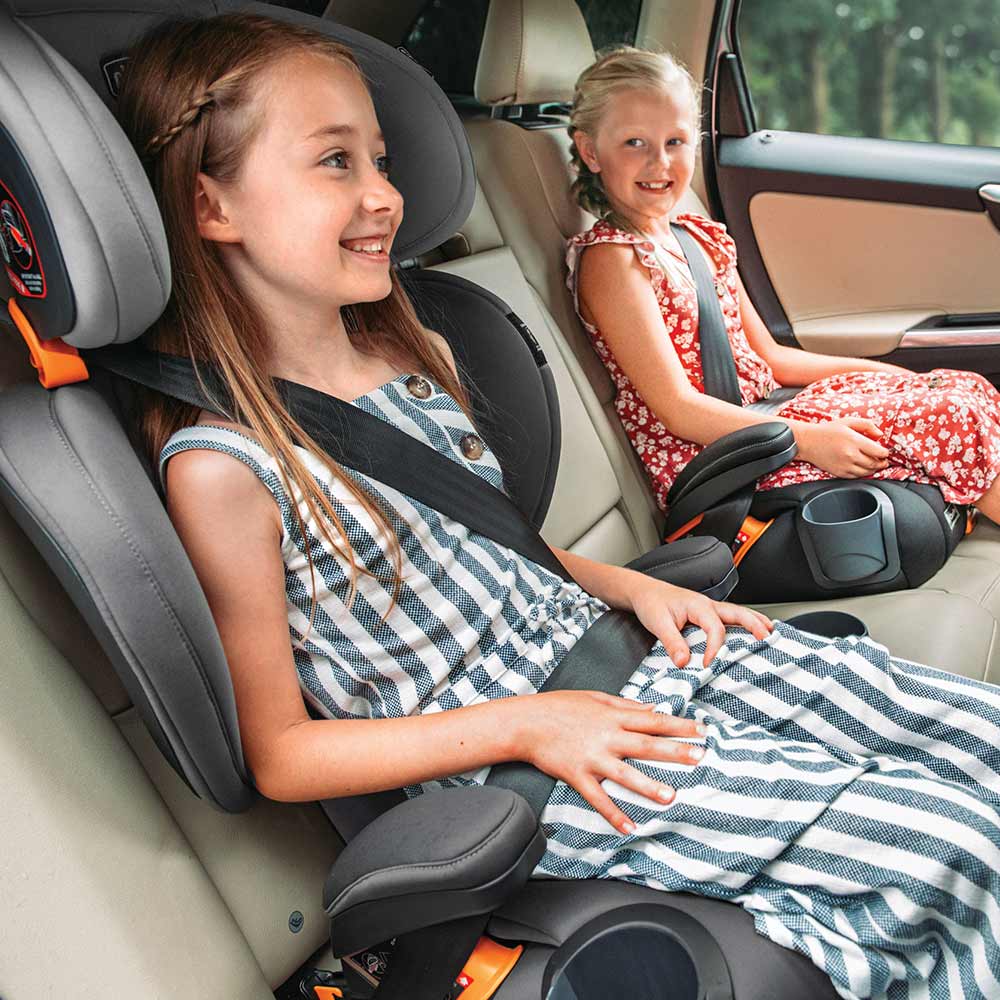
Boosters have no internal harness system. Instead, they are used to position a child passenger to safely use the vehicle’s seat belt for restraint. Though manufacturing guidelines differ, most booster seats are designed for children who are at least four years of age, weigh at least 40 pounds and are at least 38” tall.
You should never place a child in a booster seat until size requirements are met, and you should also be confident that your child will sit relatively still in the booster seat so the vehicle seat belt stays positioned properly for the duration of every ride. A child may safely graduate to the vehicle seat when the vehicle seat belt can fit snugly across the upper thighs, not the abdomen, the shoulder belt lies across the shoulder and chest rather than neck or face, and is close to 5 feet tall. Should a crash occur, the child would be highly vulnerable to injury if using an ill-fitting seat belt. A booster seat puts the child at the right height for the seat belt to have the best chance of preventing injury. Booster seats should be used until your child meets the seat belt fit test.
Seat Belt Fit Test
- They sit all the way back in the vehicle seat, their legs break at the end and their feet touch the floor.
- The lap belt fits over their hip and the shoulder belt is over their collar bone.
- The child will sit like this for the entire ride.
Key Features
- Designed to position the child so that the seat belt fits properly.
Age, Weight, or Height Limits
- Designed for children at least 4 years old, between 40-110 lbs, 38-57 inches tall, and can sit relatively still in the same seated position throughout the car ride.
Pros
- Lightweight & Portable.
- Convenient for carpooling.
- Fits in most cars.
- May convert from high-back to backless.
Cons
- Forward-facing mode only.
- No head or neck support in backless mode.
Choosing the right car seat for your little one is an important decision. Here are a few things to keep in mind during your purchasing journey to help you choose the best car seat option for your child.
Factors to Consider When Comparing Car Seats
Let's explore the essential factors that will guide your decision-making process:
Safety Features
Safety is the non-negotiable priority of any car seat choice. All car seats must meet federal safety standards and undergo rigorous testing to provide adequate protection. Look for car seats with advanced safety features like energy-absorbing foam and a reinforced steel frame. Understanding these safety regulations and what additional features each car seat offers can provide peace of mind.
Ease of Installation
A car seat can only protect your child if you install it correctly. Evaluate how easily a car seat can be installed and removed from your vehicle, considering your lifestyle needs. LATCH systems can help. LATCH systems come standard with many car seats and offer straightforward installation.
At Chicco, we are continually innovating ways of making installation as simple as possible for parents. Innovations like the LeverLock™ base installation for the Fit360 rotating car seat are designed to simplify the installation process. Select a car seat that you feel confident securing correctly every time.
Comfort and Convenience Features
Your child's comfort is also a key consideration. Look for car seats with ample padding, adjustable headrests, and multiple recline positions. Additional features like washable covers can also make everyday use more convenient and enjoyable.
Budget
Car seats range from budget-friendly models to premium options with advanced features. While it's tempting to look for cost savings, remember that comfort and suitability for your child should also inform your decision. Consider car seats as an investment in your child's safety and weigh the benefits of each model against its cost.
Keep these considerations in mind:
- Car seats expire. Be sure to check and follow your car seat’s expiration date.
- Follow installation instructions carefully. Your car seat will come with a guide from the manufacturer that you should adhere to. Be sure to check your manufacturer's website. Most have certified car seat technicians as customer service representatives and instructional videos.
- Get help with installation. If you’re unsure about car seat installation, many fire stations and local organizations have resources to help you.
- Avoid bulky clothing. When loading your child into a car seat, it’s recommended to remove bulkier clothing items like puffy jackets and simply put them over top of the harness if it’s cold. In a wreck, harness straps will likely condense these items, causing the straps to be too loose to safely secure the child.
- Stick to the backseat. Never put a car seat in the front seat of the vehicle.
- Pass on used seats. Don’t use a seat you don’t know the history of. If a car seat has been in a crash, check with the manufacturer to see if it can continue to be used. If the seat does not have the manufacturer’s label and instructions, don’t use it.
- Check recalls. Ensure your car seat isn’t on a recall list, and follow the instructions for that car seat if it is on a recall list.
Which is the best car seat for you? The right car seat for your child is the one that fits your child, and your vehicle and will be easy to install correctly every time. There’s no one seat that is considered the best. Even price alone is not an indication of the safest or most suitable car seat. You must take into consideration your child’s size, your vehicle design, and your lifestyle needs when deciding which type of car seat is right for your family. Consult the National Highway Traffic Safety Administration's guide on ensuring car seat safety based on your child’s age, weight, and height.
Chicco has car seat options for children of all ages and common sizes. Browse our car seats, bases, and boosters.
